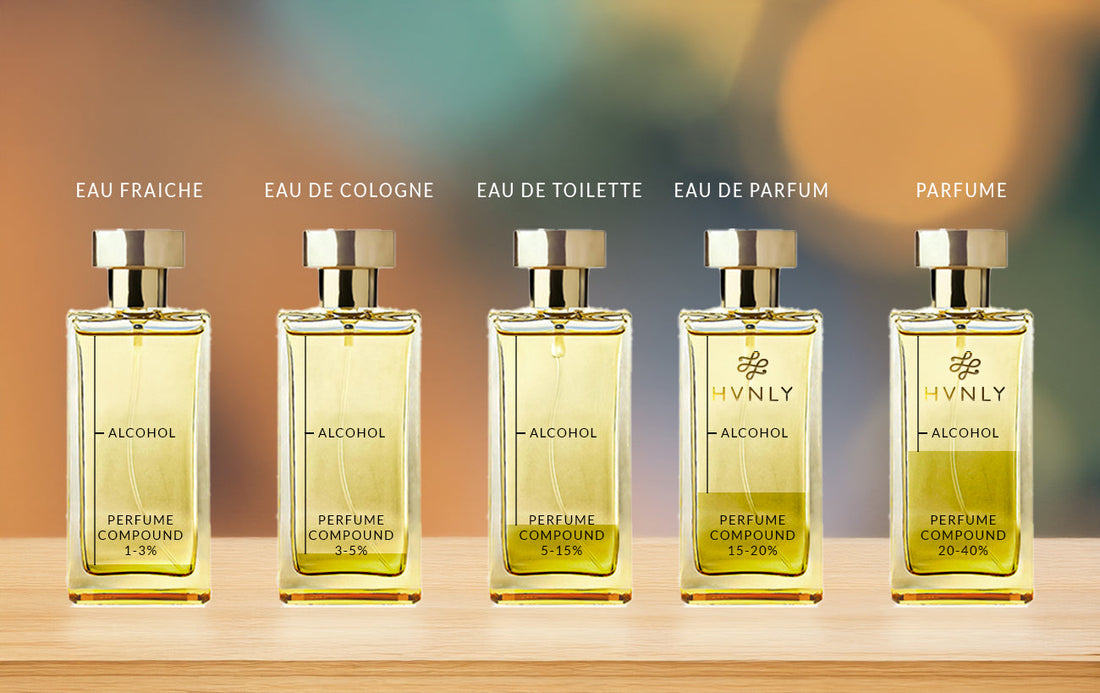
The Ultimate Guide to EDT, EDP, and Perfume Concentrations
Share
Choosing the right fragrance can be overwhelming with various concentrations available. Understanding the differences between Eau de Toilette (EDT), Eau de Parfum (EDP), and other types of perfumes can help you make the best decision for your needs. In this guide, we’ll break down the key differences in perfume concentrations, longevity, and best uses of each fragrance type.
Understanding Perfume Concentrations
Fragrances are categorized based on the concentration of perfume oils in their formulation. The higher the concentration, the stronger and longer-lasting the scent.
- Perfume (Parfum/Extrait de Parfum): The most concentrated form (20-40% perfume oils). It lasts 8-12 hours and has an intense scent.
- Eau de Parfum (EDP): A well-balanced concentration (15-20% perfume oils). It lasts 4-8 hours and is perfect for daily wear and evening occasions.
- Eau de Toilette (EDT): A lighter concentration (5-15% perfume oils). It lasts 2-4 hours and is ideal for daytime and office wear.
- Eau de Cologne (EDC): A refreshing, short-lasting concentration (2-5% perfume oils). It lasts 1-3 hours and is often used in fresh and citrusy scents.
- Eau Fraîche: The lightest concentration (1-3% perfume oils). It lasts 1-2 hours and is great for a subtle and quick refresh.
Key Differences Between EDT and EDP
| Feature | Eau de Toilette (EDT) | Eau de Parfum (EDP) |
|---|---|---|
| Concentration | 5-15% perfume oils | 15-20% perfume oils |
| Longevity | 2-4 hours | 4-8 hours |
| Sillage | Moderate | Strong |
| Best For | Daytime, work, casual | Work, Casual, Daytime Evening, special occasions |
| Price | More affordable | Higher price due to concentration |
Quick takeaway: If you prefer a lighter, refreshing scent for work or daytime, go with an EDT. For longer wear and evenings, choose an EDP.
How to Choose the Right Fragrance for You
When selecting between EDT and EDP, consider:
- Occasion: Use EDT for daily wear and EDP for evenings or formal events.
- Weather: EDT is great for warmer months, while EDP works well in cooler temperatures.
- Personal Preference: If you enjoy stronger scents, opt for EDP; if you prefer something lighter, EDT is the way to go.
Tips for Applying Perfume Effectively
✔ Spray on pulse points: Wrists, neck, behind ears, and inner elbows for longer-lasting effect.
✔ Don’t rub your wrists: This can break down fragrance molecules and alter the scent.
✔ Layer with body lotion: Helps retain the fragrance for a longer period.
✔ Store properly: Keep perfumes in a cool, dark place to preserve their quality.
Common Mistakes to Avoid
🚫 Overapplying: More isn’t always better—stick to 1-3 sprays.
🚫 Spraying on clothes: Some fragrances may stain fabrics or change scent.
🚫 Buying blindly: Always test a fragrance on your skin before purchasing.
Conclusion
Understanding the differences between EDT, EDP, and other perfume concentrations ensures you choose the right fragrance for any occasion. Whether you prefer a light and airy scent for work or a deep, long-lasting aroma for evenings, there’s a perfect concentration for everyone.
Need help finding your ideal fragrance? Let us know your style and setting, and we’ll recommend the best fragrance type for you.

